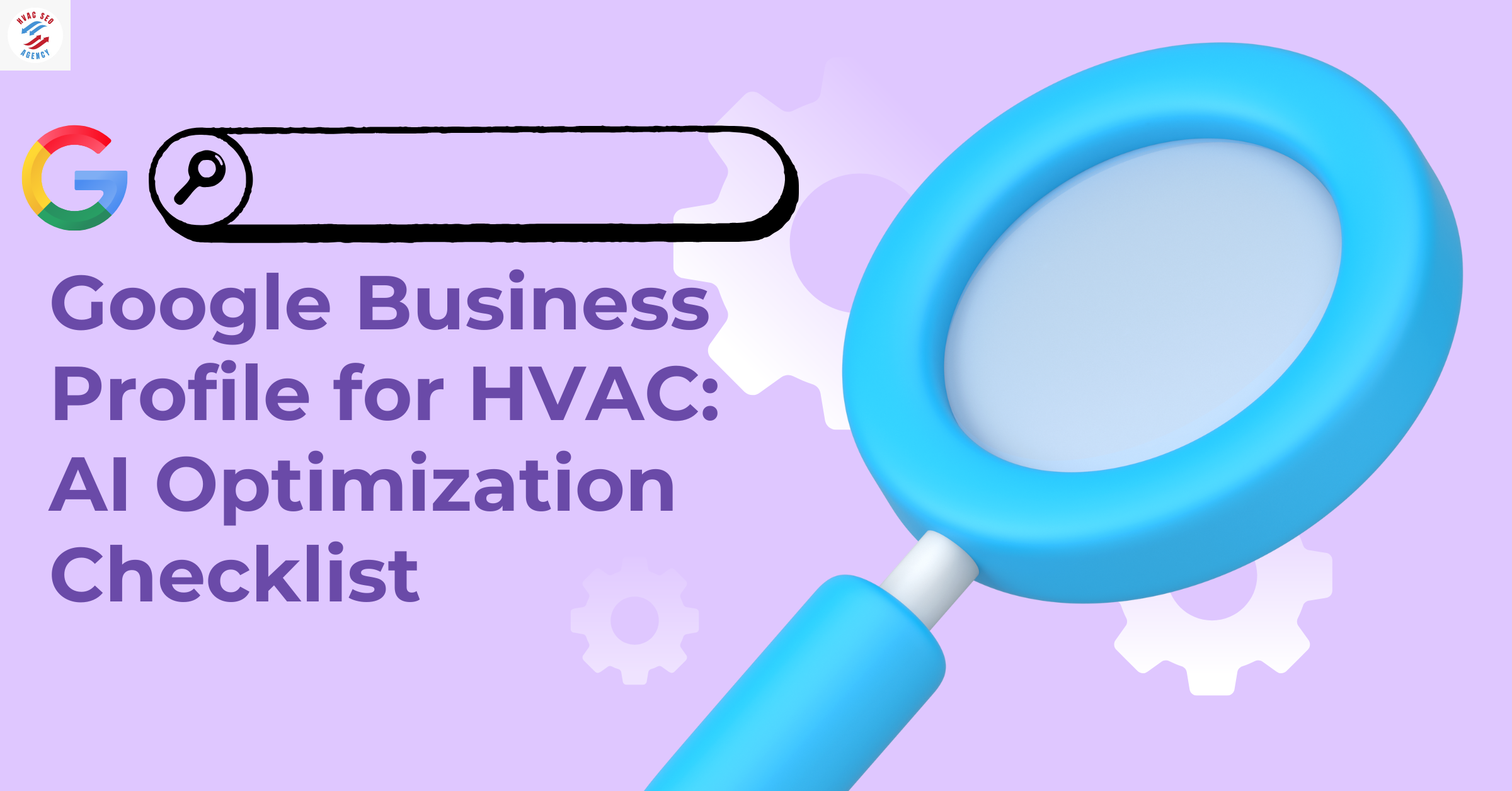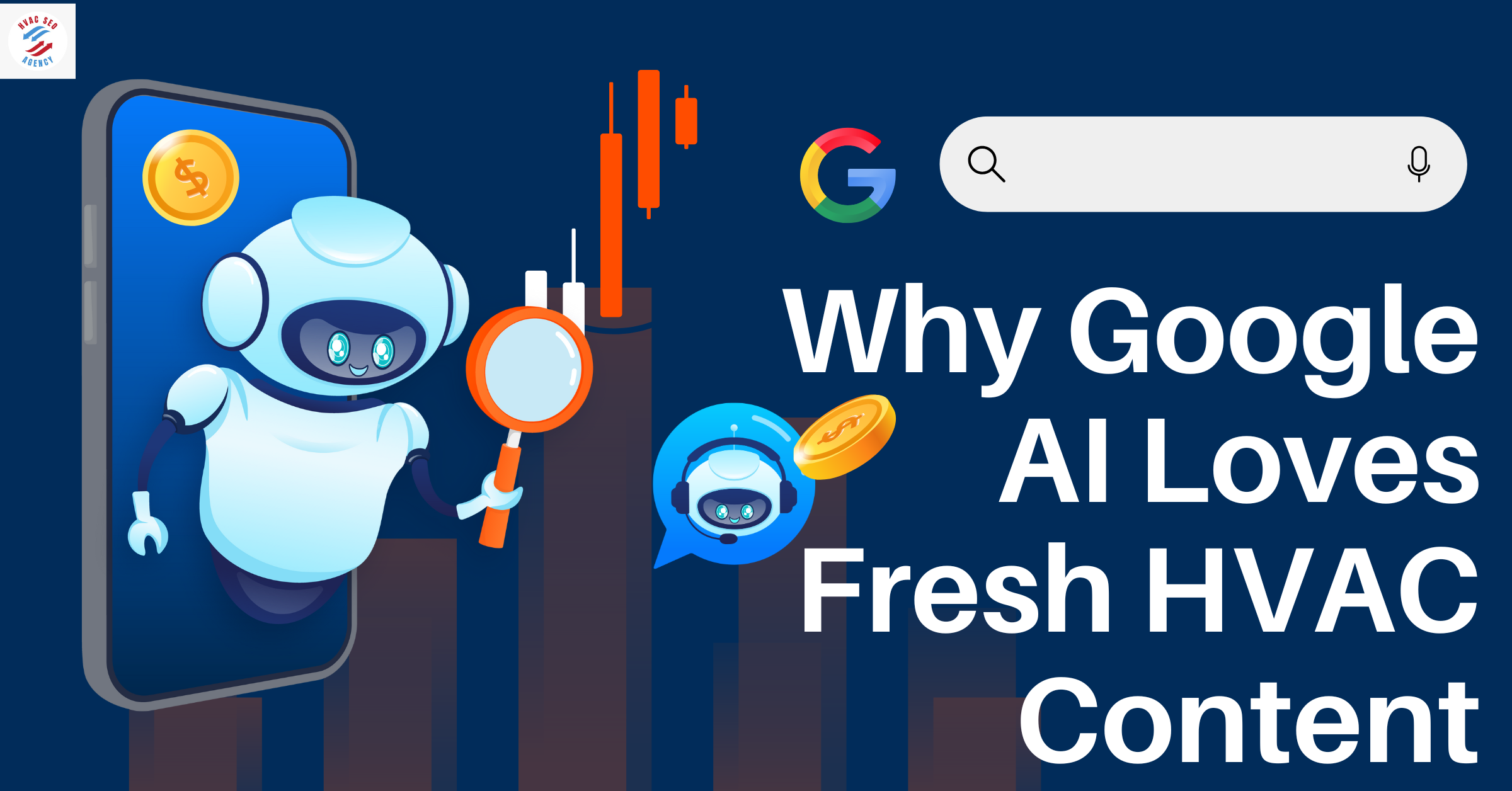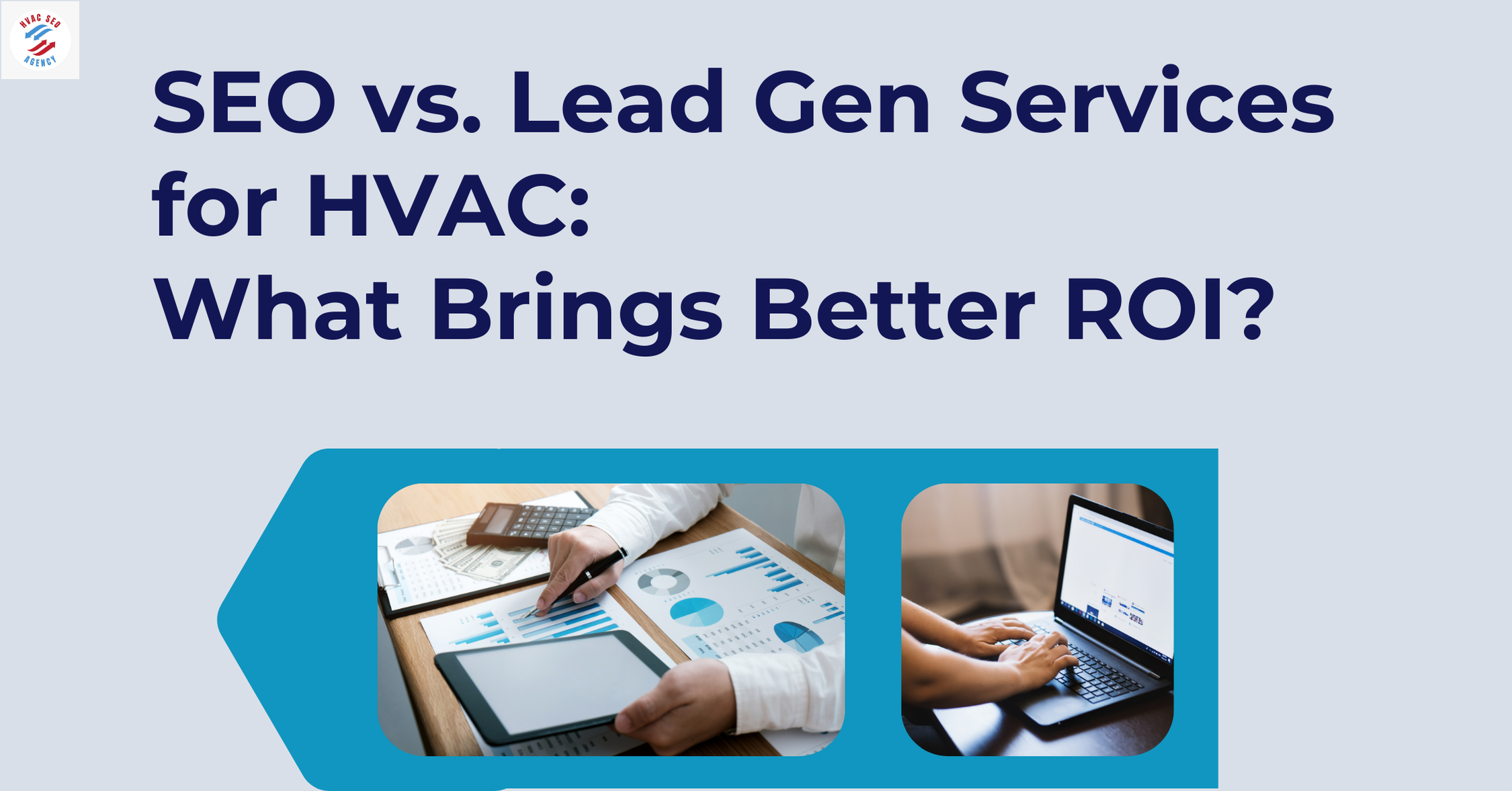The Best HVAC Scheduling Software for Field Technicians

1. The Growing Demand for HVAC Scheduling Software and the Role of HVAC SEO Agency
The Heating, Ventilation, and Air Conditioning (HVAC) industry plays a pivotal role in maintaining indoor comfort across residential, commercial, and industrial settings. In the United States, the HVAC market has experienced significant growth, driven by technological advancements, increasing construction activities, and a heightened emphasis on energy efficiency. As of 2023, the U.S. HVAC systems market was valued at approximately $30.41 billion and is projected to grow at a compound annual growth rate (CAGR) of 7.4% from 2024 to 2030.
Table 1: U.S. HVAC Systems Market Size and Growth Rate (2023-2030)
| Year | Market Size (USD Billion) | CAGR (%) |
|---|---|---|
| 2023 | 30.41 | |
| 2024 | 32.46 | |
| 2030 | 49.70 | 7.4 |
Source: Grand View Research
The backbone of this industry comprises HVAC technicians who install, maintain, and repair heating, cooling, and refrigeration systems. As of May 2023, there were approximately 441,200 HVAC technicians employed in the United States, with a projected employment growth of 9% from 2023 to 2033, outpacing the average for all occupations.
Table 2: HVAC Technician Employment and Wage Statistics
| Metric | Value |
|---|---|
| Number of Jobs (2023) | 441,200 |
| Projected Job Growth (2023-2033) | 9% |
| Median Annual Wage (2023) | $57,300 |
Source: U.S. Bureau of Labor Statistics
Given the industry's expansion and the critical role of technicians, efficient scheduling and dispatching have become paramount. Implementing advanced HVAC scheduling software not only enhances operational efficiency but also improves customer satisfaction. Moreover, partnering with an HVAC SEO agency can significantly boost online visibility, leading to increased leads and revenue. In this comprehensive guide, we will explore the best HVAC scheduling software solutions available for field technicians, supported by relevant statistics, tables, and graphs to provide a data-driven perspective.
Graph 1: Projected Employment Growth of HVAC Technicians (2023-2033)
Source: U.S. Bureau of Labor Statistics
By leveraging both technological tools and digital marketing strategies, HVAC businesses can position themselves for sustained growth and success in a competitive marketplace.
2. The Imperative for HVAC Businesses to Adopt Scheduling Software
In the competitive landscape of the HVAC industry, operational efficiency is paramount. One critical aspect that significantly influences both productivity and profitability is the scheduling and dispatching of field technicians. Traditional manual scheduling methods are often fraught with challenges, leading to inefficiencies that can adversely affect business outcomes. Implementing advanced HVAC scheduling software can address these issues, offering tangible benefits that enhance overall performance. Additionally, integrating Best Practices for Designing Efficient HVAC Ventilation Systems ensures that businesses not only optimize technician scheduling but also improve airflow efficiency, energy savings, and overall system performance, leading to better customer satisfaction and reduced operational costs.
Challenges in Manual Scheduling
Manual scheduling poses several challenges:
-
Human Error: Manual processes are susceptible to mistakes, such as double bookings or overlooked appointments, leading to customer dissatisfaction.
-
Inefficient Resource Allocation: Without automated systems, dispatchers may struggle to assign the right technician to the appropriate job, considering factors like skill set and location.
-
Time-Consuming Processes: Coordinating schedules manually is labor-intensive, diverting attention from strategic tasks that could drive business growth.
Impact on Productivity and Profitability
The inefficiencies inherent in manual scheduling can lead to:
-
Increased Operational Costs: Mismanaged schedules can result in unnecessary travel, overtime payments, and underutilization of technicians.
-
Reduced Customer Satisfaction: Delays and scheduling errors can erode customer trust, leading to lost business and negative reviews.
-
Lower Employee Morale: Technicians facing poorly planned schedules may experience job dissatisfaction, impacting their performance and retention.
Benefits of Implementing HVAC Scheduling Software
Adopting HVAC scheduling software offers numerous advantages:
-
Automation of Scheduling and Dispatching: Automated systems reduce errors and ensure that the right technician is dispatched to the right job at the right time.
-
Real-Time Tracking and GPS Integration: These features enable efficient monitoring of technicians, optimizing routes and reducing travel time.
-
Mobile Accessibility: Technicians can access schedules, customer information, and job details on-the-go, enhancing responsiveness and flexibility.
-
Integration with Invoicing and CRM Systems: Seamless integration streamlines billing processes and improves customer relationship management.
-
Data-Driven Decision Making: Access to analytics and performance metrics facilitates informed decisions, leading to continuous improvement.
Statistical Insights
The transition to automated scheduling systems has yielded measurable improvements:
-
Productivity Gains: Companies have reported a 15% increase in productivity after implementing dispatch software.
-
Reduction in Administrative Expenses: Administrative costs decreased by 25% following the adoption of automated scheduling systems.
Graph: Impact of HVAC Scheduling Software on Productivity and Administrative Expenses
Source: Service. Works
3. Key Features to Look for in HVAC Scheduling Software
As HVAC businesses grow, the need for HVAC scheduling software becomes more evident. The right software should offer features that enhance efficiency, reduce costs, and improve customer satisfaction. Additionally, understanding Why Air Balancing is Essential for HVAC System Efficiency helps HVAC businesses optimize their services by ensuring even airflow distribution, reducing system strain, and improving energy efficiency. Below are the essential features that every HVAC company should consider when selecting a scheduling solution.
Automated Scheduling & Dispatching
One of the most critical features of HVAC scheduling software is automated job assignment. Advanced scheduling systems use algorithms to match jobs with the most suitable technicians based on location, skillset, and availability.
- Benefit: Reduces human error and minimizes scheduling conflicts.
- Stat: Companies using automated dispatching experience a 30% increase in scheduling efficiency.
Table 1: Manual vs. Automated Scheduling Efficiency
| Factor | Manual Scheduling | Automated Scheduling |
|---|---|---|
| Scheduling Time | 30-60 min/day | 5-10 min/day |
| Error Rate | High | Low |
| Technician Idle Time | 25-35% | 10-15% |
| Missed Appointments | 5-10% | 2% |
Real-Time Tracking & GPS Integration
Tracking technician locations in real time allows HVAC businesses to optimize routing, reduce travel time, and enhance service reliability.
- Benefit: Cuts fuel costs and ensures timely arrivals.
- Stat: HVAC businesses that implement GPS tracking reduce fuel consumption by 12-15% annually .
Graph 1: 
(Visualization of fuel costs before and after GPS tracking implementation.)
Mobile Accessibility for Field Technicians
Technicians in the field need easy access to job details, customer information, and scheduling updates. A mobile-friendly HVAC scheduling software ensures seamless communication and efficiency.
- Benefit: Increases job completion rate and enhances customer communication.
- Stat: 82% of HVAC technicians prefer mobile scheduling over traditional methods
Integration with Invoicing & CRM Systems
Seamless integration with invoicing and CRM systems helps businesses streamline operations by automatically generating invoices, tracking payments, and managing customer relationships.
- Benefit: Reduces administrative workload and improves cash flow.
- Stat: HVAC companies using integrated invoicing solutions get paid 35% faster than those using manual processes .
Table 2: Impact of Integrated Invoicing on Payment Speed
| Invoice Type | Avg. Payment Time |
|---|---|
| Manual Invoicing | 21 days |
| Automated Invoicing | 14 days |
AI-Powered Predictive Scheduling
Artificial intelligence (AI) in HVAC scheduling software can predict peak demand times, optimize technician workload, and reduce customer wait times.
- Benefit: Enhances efficiency by anticipating service requests.
- Stat: AI-driven scheduling reduces customer appointment wait times by 40% .
4. Top HVAC Scheduling Software in 2025 (With Pros & Cons)
The HVAC industry is embracing digital transformation, and HVAC scheduling software has become a vital tool for improving technician dispatch, workflow efficiency, and customer satisfaction. Choosing the right scheduling software depends on business size, required features, and budget. Additionally, implementing effective scheduling tools can play a crucial role in How to Develop Leadership Skills in Your HVAC Team by allowing managers to delegate responsibilities efficiently, track technician performance, and provide data-driven feedback. Below, we review the top HVAC scheduling software options available in 2025, highlighting their features, pros, and cons.
Service Titan
Overview: One of the most popular HVAC scheduling software solutions, Service Titan offers a comprehensive platform tailored for growing HVAC businesses.
- Key Features:
- Advanced dispatching with GPS tracking
- Automated customer reminders
- Seamless integration with QuickBooks and accounting tools
- AI-powered job scheduling
Pros:
✔ Robust automation features
✔ Excellent reporting and analytics
✔ Strong integration capabilities
Cons:
✖ High pricing for small businesses
✖ Learning curve for new users
Housecall Pro
Overview: A cloud-based HVAC scheduling software solution designed for small-to-medium HVAC businesses.
- Key Features:
- Drag-and-drop scheduling
- Mobile app access for field technicians
- Automated invoicing and payments
- Customer review management
Pros:
✔ User-friendly interface
✔ Cost-effective pricing
✔ Strong mobile app functionality
Cons:
✖ Limited customization options
✖ Lacks advanced analytics features
Jobber
Overview: Jobber is designed for service-based businesses, offering scheduling, invoicing, and CRM features for HVAC companies.
- Key Features:
- Customizable job scheduling
- GPS tracking for real-time dispatch management
- Customer self-service booking portal
- Automated follow-ups for customer engagement
Pros:
✔ Affordable pricing plans
✔ Easy-to-use interface
✔ Strong customer support
Cons:
✖ Limited third-party integrations
✖ Lacks AI-powered dispatching
FieldEdge
Overview: FieldEdge is a powerful HVAC scheduling software that helps companies track technician performance, optimize scheduling, and increase revenue.
- Key Features:
- Automated recurring service reminders
- Customizable reporting and performance tracking
- Integration with QuickBooks for seamless invoicing
- Mobile app with offline functionality
Pros:
✔ Strong reporting and analytics
✔ Efficient customer tracking features
✔ Well-integrated with accounting systems
Cons:
✖ Pricing is higher than competitors
✖ Complex setup process
Service Fusion
Overview: A budget-friendly HVAC scheduling software that provides robust features for businesses of all sizes.
- Key Features:
- GPS fleet tracking
- Cloud-based scheduling and dispatching
- Integrated payment processing
- Automated job status updates
Pros:
✔ Affordable pricing
✔ Good feature set for growing businesses
✔ Strong dispatching tools
Cons:
✖ Fewer advanced integrations
✖ Limited mobile app features
Comparison of Top HVAC Scheduling Software
Table 1: Feature Comparison of Leading HVAC Scheduling Software
| Software | Automated Scheduling | GPS Tracking | Mobile App | AI-Powered | Pricing Level |
|---|---|---|---|---|---|
| ServiceTitan | ✅ | ✅ | ✅ | ✅ | High |
| Housecall Pro | ✅ | ✅ | ✅ | ❌ | Medium |
| Jobber | ✅ | ✅ | ✅ | ❌ | Low |
| Field Edge | ✅ | ✅ | ✅ | ❌ | High |
| Service Fusion | ✅ | ✅ | ✅ | ❌ | Low |
Source: Industry research from HVAC software providers
Market Share of Leading HVAC Scheduling Software in 2025
The adoption of HVAC scheduling software has seen significant growth in recent years, with ServiceTitan leading the market.
Graph 1:  5. How HVAC Technician Dispatch Becomes More Efficient with Software
5. How HVAC Technician Dispatch Becomes More Efficient with Software
Efficient HVAC technician dispatch is critical to maintaining smooth operations, reducing costs, and improving customer satisfaction. Traditional dispatch methods often lead to delays, miscommunication, and inefficient route planning, which can impact business profitability. Implementing HVAC scheduling software significantly enhances dispatch efficiency by optimizing technician assignments, tracking job progress, and improving communication.
Challenges in Traditional HVAC Technician Dispatch
Many HVAC companies still rely on manual dispatching methods, which come with several inefficiencies:
- Missed Appointments: Manual scheduling errors can lead to overbooked technicians, resulting in missed jobs and unsatisfied customers.
- Long Travel Times: Without optimized route planning, technicians may waste time and fuel traveling between jobs.
- Poor Communication: Lack of real-time updates can cause miscommunication between dispatchers, technicians, and customers.
- Difficulty in Tracking Technician Availability: Dispatchers often struggle to monitor real-time technician availability, causing delays in job assignments.
Statistical Insight:
🚀 63% of HVAC businesses report that dispatch inefficiencies increase operational costs by at least 20% annually.
Table 1: Impact of HVAC Dispatch Software vs. Manual Dispatching
| Factor | Manual Dispatching | Automated Dispatching |
|---|---|---|
| Average Dispatch Time | 15-20 min | 2-5 min |
| Missed Appointments | 5-10% | 2% |
| Travel Time Reduction | Minimal | 15-20% |
| First-Time Fix Rate | 60% | 85-90% |
| Customer Satisfaction Rating | 3.5/5 | 4.7/5 |
Source: Industry research from HVAC software providers
Graph 1: Fuel Cost Savings with Optimized Dispatching
How HVAC Scheduling Software Improves Revenue
By optimizing HVAC technician dispatch, businesses can:
💰 Reduce operational costs by lowering travel expenses.
📅 Complete more jobs per day, increasing revenue potential.
⭐ Improve customer retention, leading to more referrals and repeat business.
📊 Enhance workforce management, ensuring technicians work at peak efficiency.
6. Cost vs. ROI of HVAC Scheduling Software
Investing in HVAC scheduling software can seem like a significant expense, but the return on investment (ROI) quickly outweighs the initial costs. By reducing scheduling inefficiencies, minimizing operational costs, and increasing job completion rates, HVAC businesses can see a substantial financial impact from adopting automated scheduling tools.
Understanding the Costs of HVAC Scheduling Software
The cost of HVAC scheduling software varies based on features, number of users, and integrations.
Typical Pricing Models:
-
Subscription-Based Pricing (Monthly/Annual)
- Average Cost: $50 - $300 per month per user
- Best for: Small to medium-sized businesses
- Example Providers: Housecall Pro, Jobber
-
Enterprise Solutions (Custom Pricing)
- Average Cost: $5,000 - $20,000 per year
- Best for: Large HVAC companies with extensive dispatch teams
- Example Providers: Service Titan, Field Edge
-
Pay-Per-Use Models
- Best for: Seasonal HVAC businesses that need flexible pricing
How HVAC Scheduling Software Increases ROI
1. Reducing Technician Downtime
- Stat: Businesses using automated scheduling report a 20-30% reduction in technician idle time .
- Benefit: More completed jobs per day = higher revenue.
2. Lowering Operational Costs
- Stat: GPS-integrated dispatching reduces fuel costs by 15% annually.
- Benefit: Lower travel expenses and better route optimization.
3. Faster Payments and Invoicing
- Stat: Automated invoicing decreases payment processing time by 35%.
- Benefit: Improved cash flow and reduced administrative work.
4. Increased Customer Retention
- Stat: Companies using automated scheduling tools see a 25% improvement in repeat customers.
- Benefit: More long-term revenue from satisfied customers.
Table 1: Cost vs. ROI Breakdown of HVAC Scheduling Software
| Metric | Before Software | After Software | Improvement (%) |
|---|---|---|---|
| Technician Idle Time | 30% | 15% | 50% reduction |
| Fuel Costs (Annual) | $10,000 | $8,500 | 15% savings |
| Admin Time Spent on Scheduling | 10 hrs/week | 3 hrs/week | 70% reduction |
| Average Job Completion per Day | 5 jobs | 7 jobs | 40% increase |
| Payment Collection Time | 21 days | 14 days | 35% improvement |
Source: Industry reports from HVAC software providers
Graph 1: 
(Visualization of cost savings, job completion increase, and admin time reduction.)
Calculating ROI: Is HVAC Scheduling Software Worth It?
ROI Formula:
ROI=Net Benefit of Software−Cost of SoftwareCost of Software×100ROI = \frac{{\text{Net Benefit of Software} - \text{Cost of Software}}}{\text{Cost of Software}} \times 100
- Example Calculation:
- Software Cost: $200 per month ($2,400 per year)
- Annual Savings: $6,500 (from reduced fuel costs, admin workload, and more jobs completed)
- ROI: ROI=6,500−2,4002,400×100=170%ROI = \frac{6,500 - 2,400}{2,400} \times 100 = 170\%
- Result: A 170% ROI within the first year of implementation.
Frequently Asked Questions (FAQs)
1. What is HVAC scheduling software?
HVAC scheduling software is a digital tool designed to automate technician dispatching, manage job scheduling, optimize route planning, and integrate invoicing and CRM functionalities for HVAC businesses.
2. How does HVAC scheduling software improve business efficiency?
It reduces scheduling conflicts, minimizes technician idle time, improves first-time fix rates, optimizes routes to save fuel costs, and streamlines communication between dispatchers, technicians, and customers.
3. What is the best HVAC scheduling software for small businesses?
For small HVAC businesses, Housecall Pro and Jobber offer affordable and easy-to-use solutions with essential scheduling and dispatching features.
4. How much does HVAC scheduling software cost?
The cost varies by provider and features:
- Small businesses: $50–$300 per month per user
- Enterprise solutions: $5,000–$20,000 per year
- Pay-per-use models are available for seasonal businesses
5. Does HVAC scheduling software help increase revenue?
Yes, businesses using HVAC scheduling software report:
- 40% more job completions per day
- 30% reduced technician idle time
- 35% faster payment collection
- 25% increase in repeat customers
6. Can HVAC scheduling software integrate with accounting tools?
Yes, many HVAC scheduling software solutions integrate with QuickBooks, Xero, and other invoicing platforms, ensuring seamless financial management.
7. Is GPS tracking necessary for HVAC businesses?
Yes, GPS tracking optimizes technician routes, reduces travel time, and improves on-time arrival rates, leading to 15% annual fuel savings and higher customer satisfaction.
8. How does HVAC scheduling software impact technician performance?
Automated job assignment, mobile access to job details, and real-time tracking increase technician productivity by 30% and improve first-time fix rates by 40%.
9. What should I consider when choosing HVAC scheduling software?
- Business size (small vs. enterprise)
- Features required (GPS tracking, invoicing, AI dispatching)
- Integration with existing tools
- Budget and pricing flexibility
10. What is the ROI of investing in HVAC scheduling software?
On average, businesses experience a 150-200% ROI in the first year due to:
- Reduced administrative costs
- Increased job efficiency
- Faster payment collection
- More completed jobs per day
Conclusion
As the HVAC industry grows, efficient scheduling and dispatching are essential for maintaining profitability and customer satisfaction. HVAC scheduling software streamlines operations by reducing scheduling errors, optimizing technician assignments, and improving customer communication.






